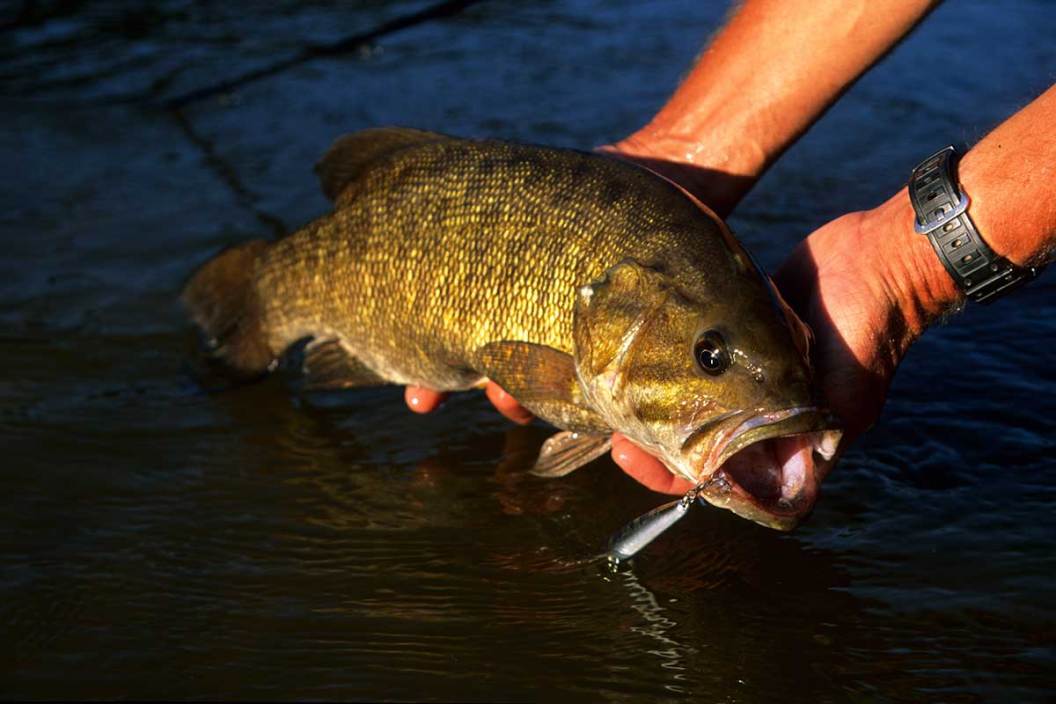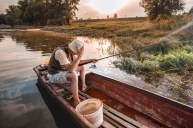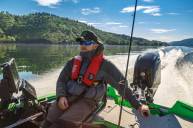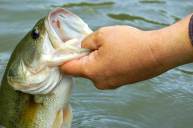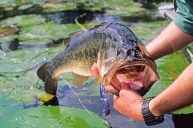When the chips are down you'll need to remember that these five bass fishing rules are the most important.
Largemouth bass and smallmouth bass are two of the most universally important pastimes for the bulk of anglers in North America, and in fact around the world. But expert bass fishing tips mean a lot more than watching the Bassmaster Classic and seeing the pros catch big bass.
It's not so hard to find what bass like when the conditions are optimum. We're all experts during the spawn when males will attack just about anything that moves past them. Then your fishing fortune reverts to the harsh reality of cold water or a falling barometer.
From Florida to Texas to California and to New York, finding what fishing technique seasoned bass fishermen use to catch the biggest and most fish can help make your trip out on the water successful. We need to make it clear: we aren't talking about the regulations about what's legal and what's not when it comes to bass fishing in the state or location you're planning to fish. Always consult the respective wildlife agencies for the most current "rules" as far as legalities are concerned.
For more practical, "best practice"-type rules, here are the five consistent things that mean the most and play the biggest part in chasing the black bass.
Change It Up for Clear Water Bass Fishing
One of the things that anglers know well, and non-fishermen seem to find laughable, is the fact that fish don't have eyelids to protect their eyes. Bass are susceptible to bright sunlight and often seek shade or deeper water to escape it.
The fact still remains that clear water can provide some of the best bass fishing that there is. In the early part of the year you may deal with stained or even cloudy water, but when things clear up, your tactics should change.
Polarized sunglasses will be your best friend, cutting down glare and helping to spot a fish that you might not have seen, or at least detect its movement.
The most fundamental rule is to fish brightly colored baits in stained or cloudy water and more subtle offerings in clear water. Obviously, bass fishing in stained or muddier waters can be great, but the logistics are just not the same as when it's clear. Use fishing line that disappears in the water column, and match lure patterns to actual bait that frequents the area when the water's clear.
I'm a tried and true believer in braided fishing line, as it can be ultra-strong while still being small in diameter. But in my experience, clear water calls for 8- to 10-pound test fluorocarbon to fool wary bass. This is where your expertise with fishing knots and vigilance in checking your line for nicks is paramount.
Pay Attention to Your Depth in Concordance With the Time of Year
Depth as a rule for bass fishing is as much a physical thing as it is a seasonal thing. In the early part of the year, fish are beginning to stage for the spawn as the shallow water begins to warm and the change in temperature shifts bass from simple winter survivors to active breeders.
Once this rite of spring has ended, big bass in particular will begin to shun the brighter, longer daylight hours for the depths and seemingly disappear for extended periods. Early morning forays can find a few still lingering in the shallows, but now is when you need to have lure and bait staples like the flutter spoon, Carolina rig, and the venerable football jig in you arsenal.
Drop shot rigs have become the go-to offering for anglers trying to get down deep. This rig gives new life to soft plastic finesse worms and creature baits that bass go wild for.
What's the Temperature? You Should Always Know It
There is and has always been a temperature preference difference between small and largemouth bass. Still, these freshwater cousins are found in many of the same areas and can live side by side in the same waters. Heck, there are times I've caught both in separate casts to the same spot.
The temperature, and specifically the temperature change over time, is what bass anglers ought to be paying attention to.
Since most of us tend to fish lakes, ponds, and other impoundments, we can watch as the water warms and critters like frogs, salamanders, and crawfish begin to emerge. Most of the time that indicates that the feast is on. When hot summer days begin to raise the water temps, bass will start their search for food in deeper, cooler waters.
Now the relationship between water temperature and fish depth can begin to make itself known. Water temperature is as much about finding bass as it is about catching them.
Always Check the Barometer
The effect of barometric pressure on bass fishing will always be one of the hot button topics of the angling community. Many respected bass fishing dignitaries agree (and in fact most studies indicate) that there is no real significant effect on the activity of bass or any other game fish during any change in barometric pressure.
But the debate begins when you try to go out and to catch a bass during a cold front transition on a northern lake.
Sometimes it is a simple change in tactics that will elicit a strike, such as using finesse baits in deeper water. Slowing down your presentation also helps, as does changing lure size. Smaller works better for me during pressure drops, but it may not work for everyone.
Whether bass school up or continue to stay separated during a cold front seems to be a moot point. In my experience, they either disappear or just seem to stop biting for the most part. Low light is a great mitigating factor as it makes it easier for bass to ambush prey, and when the barometer is low, it's usually cloudy. These sort of details will lead us to the final point.
Make an Informed Lure Selection
Unless you're in a bass fishing tournament or a location where there are special regulations, live bait is typically your best choice to bag a largemouth or smallmouth, especially a trophy-sized bass. But for most bass anglers, artificial baits, jigs, and lures are the most common choice.
Lure selection is a choice that needs to be made by analyzing the previous four factors: water clarity, depth, temperature, and barometer. Size, color, and type are the big three determining factors, but presentation and timing are particularly important.
But don't be afraid to think outside the box a bit, especially when the fish aren't cooperating. Try something bright on a bright day or slow roll a drab crank bait (with rattles) through the turbid waters of spring.
And since catch and release fishing is such a popular way of doing it, considerations like hook type come into play. A treble hook can get stuck deep in a fish's throat and prove more difficult to extract than a single-shanked hook. Barbed hooks can promise better landing success rates, but can make release a little tougher at times. Ultimately, lure selection is a decision you'll have to make for yourself.
The Rules of Bass Fishing
Bass fishing is so popular for some really great reasons. It is the one thing that is accessible for most folks with a minimum of effort and supplies. It's available in different levels, too: as a family pastime for you and your loved ones or a professional career for those who make a living doing it. It gives us a great way to enjoy the outdoors, and presents the possibility for any normal guy or gal to catch the biggest bass of their life.
Bass fishing is the thing that makes us feel like a pro when we're fishing with friends on the weekend, and with the same bragging rights! Remember to be aware of your statewide fishing regulations and bag limits.
?It might sound silly, but a fishing license as well.
Honestly, most of these rules apply for striped bass, spotted bass, white bass, sunfish, crappie, and heck even catfish when it comes to freshwater fishing. Whether you are boating or shore fishing, using artificial lures or live bait, it is still fishing locations and skill that are what will fill your live-well.
We all know a great bass fishery when we see one, but we may get stymied at times trying to find just exactly what it is that they want on a particular day. With these five things in mind, you may just have another weapon in your arsenal to target these sometimes finicky fish.
Looking for a new way to display those antler sheds? Go to Rack Hub and use the coupon code Craiger. Be sure to follow my webpage, or on Facebook and YouTube.
Products featured on Wide Open Spaces are independently selected by our writers and editors. However, when you buy something through our links, we may earn a commission.
NEXT: SPOTTED BASS: HOW TO 'SPOT' AND FISH FOR THE LARGEMOUTH COUSIN
